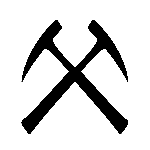6: Earthquakes
- Page ID
- 25524
\( \newcommand{\vecs}[1]{\overset { \scriptstyle \rightharpoonup} {\mathbf{#1}} } \)
\( \newcommand{\vecd}[1]{\overset{-\!-\!\rightharpoonup}{\vphantom{a}\smash {#1}}} \)
\( \newcommand{\dsum}{\displaystyle\sum\limits} \)
\( \newcommand{\dint}{\displaystyle\int\limits} \)
\( \newcommand{\dlim}{\displaystyle\lim\limits} \)
\( \newcommand{\id}{\mathrm{id}}\) \( \newcommand{\Span}{\mathrm{span}}\)
( \newcommand{\kernel}{\mathrm{null}\,}\) \( \newcommand{\range}{\mathrm{range}\,}\)
\( \newcommand{\RealPart}{\mathrm{Re}}\) \( \newcommand{\ImaginaryPart}{\mathrm{Im}}\)
\( \newcommand{\Argument}{\mathrm{Arg}}\) \( \newcommand{\norm}[1]{\| #1 \|}\)
\( \newcommand{\inner}[2]{\langle #1, #2 \rangle}\)
\( \newcommand{\Span}{\mathrm{span}}\)
\( \newcommand{\id}{\mathrm{id}}\)
\( \newcommand{\Span}{\mathrm{span}}\)
\( \newcommand{\kernel}{\mathrm{null}\,}\)
\( \newcommand{\range}{\mathrm{range}\,}\)
\( \newcommand{\RealPart}{\mathrm{Re}}\)
\( \newcommand{\ImaginaryPart}{\mathrm{Im}}\)
\( \newcommand{\Argument}{\mathrm{Arg}}\)
\( \newcommand{\norm}[1]{\| #1 \|}\)
\( \newcommand{\inner}[2]{\langle #1, #2 \rangle}\)
\( \newcommand{\Span}{\mathrm{span}}\) \( \newcommand{\AA}{\unicode[.8,0]{x212B}}\)
\( \newcommand{\vectorA}[1]{\vec{#1}} % arrow\)
\( \newcommand{\vectorAt}[1]{\vec{\text{#1}}} % arrow\)
\( \newcommand{\vectorB}[1]{\overset { \scriptstyle \rightharpoonup} {\mathbf{#1}} } \)
\( \newcommand{\vectorC}[1]{\textbf{#1}} \)
\( \newcommand{\vectorD}[1]{\overrightarrow{#1}} \)
\( \newcommand{\vectorDt}[1]{\overrightarrow{\text{#1}}} \)
\( \newcommand{\vectE}[1]{\overset{-\!-\!\rightharpoonup}{\vphantom{a}\smash{\mathbf {#1}}}} \)
\( \newcommand{\vecs}[1]{\overset { \scriptstyle \rightharpoonup} {\mathbf{#1}} } \)
\( \newcommand{\vecd}[1]{\overset{-\!-\!\rightharpoonup}{\vphantom{a}\smash {#1}}} \)
\(\newcommand{\avec}{\mathbf a}\) \(\newcommand{\bvec}{\mathbf b}\) \(\newcommand{\cvec}{\mathbf c}\) \(\newcommand{\dvec}{\mathbf d}\) \(\newcommand{\dtil}{\widetilde{\mathbf d}}\) \(\newcommand{\evec}{\mathbf e}\) \(\newcommand{\fvec}{\mathbf f}\) \(\newcommand{\nvec}{\mathbf n}\) \(\newcommand{\pvec}{\mathbf p}\) \(\newcommand{\qvec}{\mathbf q}\) \(\newcommand{\svec}{\mathbf s}\) \(\newcommand{\tvec}{\mathbf t}\) \(\newcommand{\uvec}{\mathbf u}\) \(\newcommand{\vvec}{\mathbf v}\) \(\newcommand{\wvec}{\mathbf w}\) \(\newcommand{\xvec}{\mathbf x}\) \(\newcommand{\yvec}{\mathbf y}\) \(\newcommand{\zvec}{\mathbf z}\) \(\newcommand{\rvec}{\mathbf r}\) \(\newcommand{\mvec}{\mathbf m}\) \(\newcommand{\zerovec}{\mathbf 0}\) \(\newcommand{\onevec}{\mathbf 1}\) \(\newcommand{\real}{\mathbb R}\) \(\newcommand{\twovec}[2]{\left[\begin{array}{r}#1 \\ #2 \end{array}\right]}\) \(\newcommand{\ctwovec}[2]{\left[\begin{array}{c}#1 \\ #2 \end{array}\right]}\) \(\newcommand{\threevec}[3]{\left[\begin{array}{r}#1 \\ #2 \\ #3 \end{array}\right]}\) \(\newcommand{\cthreevec}[3]{\left[\begin{array}{c}#1 \\ #2 \\ #3 \end{array}\right]}\) \(\newcommand{\fourvec}[4]{\left[\begin{array}{r}#1 \\ #2 \\ #3 \\ #4 \end{array}\right]}\) \(\newcommand{\cfourvec}[4]{\left[\begin{array}{c}#1 \\ #2 \\ #3 \\ #4 \end{array}\right]}\) \(\newcommand{\fivevec}[5]{\left[\begin{array}{r}#1 \\ #2 \\ #3 \\ #4 \\ #5 \\ \end{array}\right]}\) \(\newcommand{\cfivevec}[5]{\left[\begin{array}{c}#1 \\ #2 \\ #3 \\ #4 \\ #5 \\ \end{array}\right]}\) \(\newcommand{\mattwo}[4]{\left[\begin{array}{rr}#1 \amp #2 \\ #3 \amp #4 \\ \end{array}\right]}\) \(\newcommand{\laspan}[1]{\text{Span}\{#1\}}\) \(\newcommand{\bcal}{\cal B}\) \(\newcommand{\ccal}{\cal C}\) \(\newcommand{\scal}{\cal S}\) \(\newcommand{\wcal}{\cal W}\) \(\newcommand{\ecal}{\cal E}\) \(\newcommand{\coords}[2]{\left\{#1\right\}_{#2}}\) \(\newcommand{\gray}[1]{\color{gray}{#1}}\) \(\newcommand{\lgray}[1]{\color{lightgray}{#1}}\) \(\newcommand{\rank}{\operatorname{rank}}\) \(\newcommand{\row}{\text{Row}}\) \(\newcommand{\col}{\text{Col}}\) \(\renewcommand{\row}{\text{Row}}\) \(\newcommand{\nul}{\text{Nul}}\) \(\newcommand{\var}{\text{Var}}\) \(\newcommand{\corr}{\text{corr}}\) \(\newcommand{\len}[1]{\left|#1\right|}\) \(\newcommand{\bbar}{\overline{\bvec}}\) \(\newcommand{\bhat}{\widehat{\bvec}}\) \(\newcommand{\bperp}{\bvec^\perp}\) \(\newcommand{\xhat}{\widehat{\xvec}}\) \(\newcommand{\vhat}{\widehat{\vvec}}\) \(\newcommand{\uhat}{\widehat{\uvec}}\) \(\newcommand{\what}{\widehat{\wvec}}\) \(\newcommand{\Sighat}{\widehat{\Sigma}}\) \(\newcommand{\lt}{<}\) \(\newcommand{\gt}{>}\) \(\newcommand{\amp}{&}\) \(\definecolor{fillinmathshade}{gray}{0.9}\)- After having carefully read this chapter and completed the exercises within it and the questions at the end, you should be able to:
- Explain how the principle of elastic deformation applies to earthquakes,
- Describe how the main shock and the immediate aftershocks define the rupture surface of an earthquake, and explain how stress transfer is related to aftershocks,
- Explain the process of episodic tremor and slip,
- Describe the relationship between earthquakes and plate tectonics, including where we should expect earthquakes to happen at different types of plate boundaries, and at what depths,
- Distinguish between earthquake magnitude and intensity, and explain some of the ways of estimating magnitude,
- Explain the importance of collecting intensity data following an earthquake,
- Describe the origins of the various impacts of earthquakes, including destruction to buildings and other infrastructure, fires, slope failures, liquefaction, and tsunami, and
- Discuss the value of earthquake predictions, and describe some of the steps that governments and individuals can take to minimize the impacts of Large earthquakes.
- 6.1: What is an Earthquake?
- This page explains that earthquakes happen when rocks rupture due to tectonic stress, resulting in aftershocks that can vary in timing and magnitude. It also discusses episodic tremor and slip in subduction zones, which can release tension but may lead to larger earthquakes due to stress transfer. Understanding these processes is important for earthquake preparedness.
- 6.2: Earthquakes and Plate Tectonics
- This page discusses the global distribution of earthquakes in relation to tectonic plate boundaries. It highlights that shallow earthquakes usually occur at divergent boundaries and transform faults, whereas deeper earthquakes are typical in subduction zones. Notable seismic areas include the mid-Atlantic Ridge and the Caribbean.
- 6.3: Measuring Earthquakes
- This page explains earthquake measurement through magnitude and intensity, emphasizing their roles in assessing damage. Magnitude is sometimes mistakenly called "Richter magnitude" and is measured through various methods like moment magnitude. Intensity varies with location and geological conditions, crucial for damage assessment.
- 6.4: The Impacts of Earthquakes
- This page outlines the substantial damage caused by earthquakes, influenced by local geology and inadequate building codes, highlighted by historical events like the Loma Prieta and Izmit earthquakes. It also addresses marine earthquake hazards, especially the risks associated with tsunamis from significant subduction-related events, such as the 2004 Indian Ocean tsunami and the 2011 Tohoku earthquake.
- 6.5: Forecasting Earthquakes and Minimizing Damage and Casualties
- This page discusses the challenges in accurately predicting earthquakes, highlighting past failed attempts and the shift towards probabilistic forecasting. It emphasizes the development of early warning systems in places like Mexico and Japan, the importance of building safety regulations, and the need for public preparedness initiatives to enhance resilience against seismic events.
- 6.6: Chapter 6 Summary and Questions for Review
- This page discusses earthquakes, including their definition, causes, and measurement methods. It highlights their occurrence near plate boundaries, particularly at transform and convergent zones, and examines the impacts such as building damage, fires, and tsunamis. The chapter stresses the significance of earthquake awareness and effective building practices to reduce risks, given the unreliability of forecasting. Additionally, review questions are included to aid in reinforcing the material.
Earthquakes scare people … a lot! That’s not surprising because time and time again earthquakes have caused massive damage and many, many casualties. The magnitude 7 Aegean Sea earthquake of October 2020 (Figure 6.0.1) is a good example. There was heavy damage in the Izmer region of Turkey and 117 people in that area died, while over 1000 were injured.[1] As described in Section 6.4, Turkey has been very hard hit by earthquakes in the past several decades, and it’s understandable for people to be concerned.

Media Attribution
- Figure 6.0.1 2020 Aegean Sea Earthquake Search and Rescue by Oğulcan Bakiler, public domain image provided by Voice of America, via Wikimedia Commons, https://commons.wikimedia.org/wiki/F..._efforts_2.jpg
- From Wikipedia article on 2020 Aegean Sea Earthquake: Wikipedia contributors. (2021, October 20). 2020 Aegean Sea earthquake. In Wikipedia. (Accessed October 25, 2021), https://en.Wikipedia.org/w/index.php...did=1050888173 ↵


